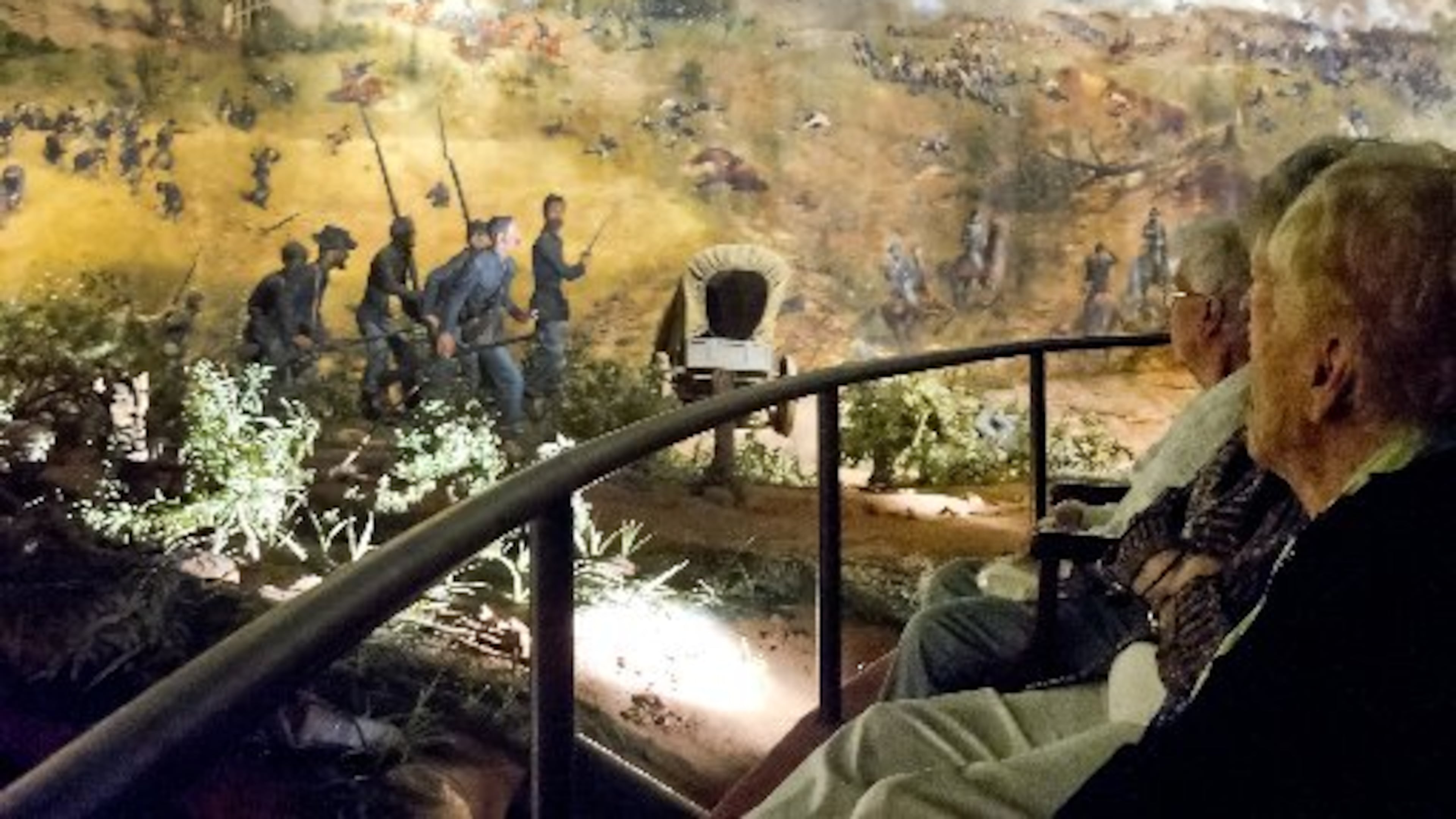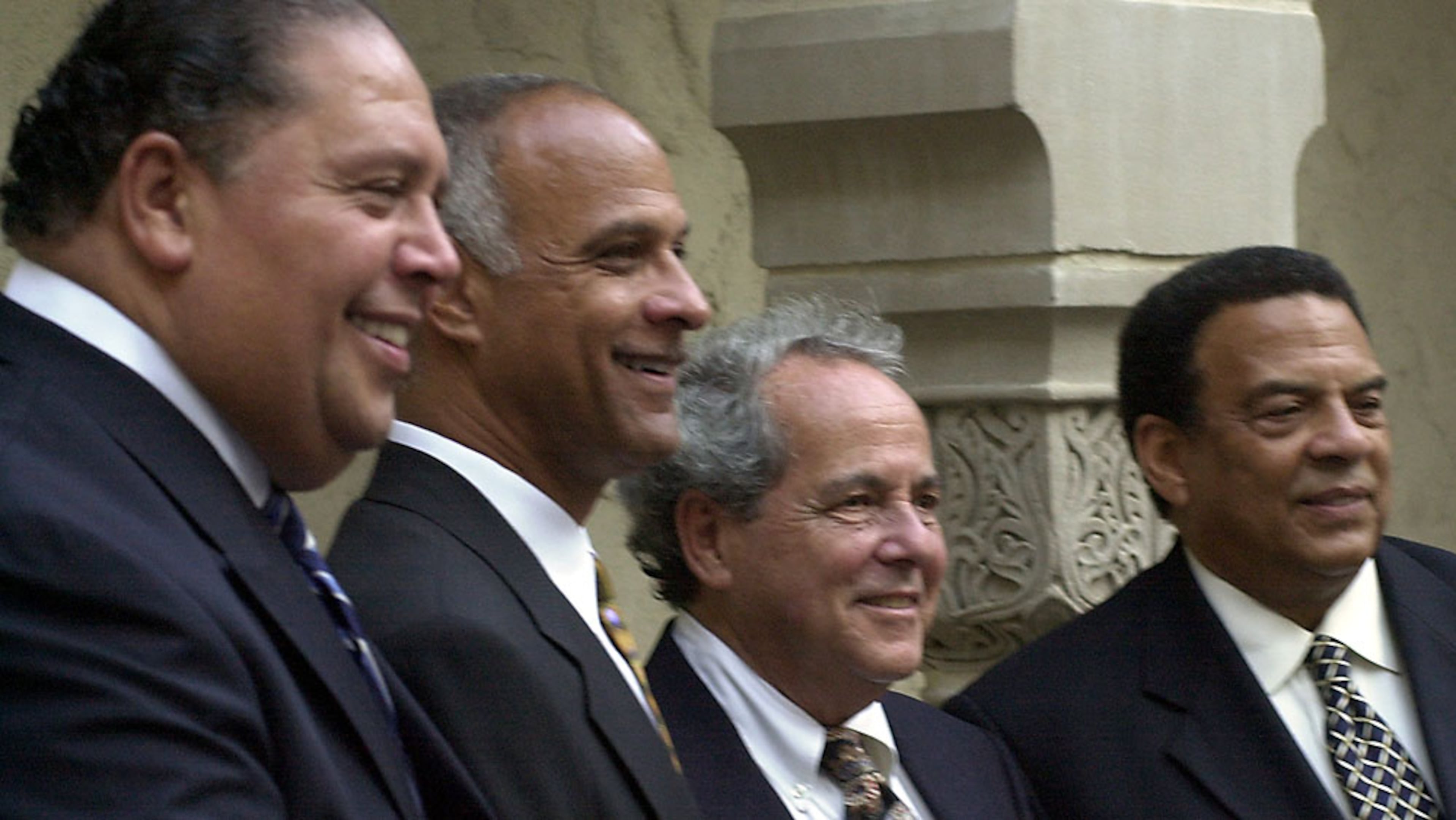The Cyclorama and an end to a 40-year fight over Confederate history

If you blinked, you might have missed it.
While the world was hypnotized by a Rebel battle emblem on the lawn of South Carolina’s capitol, the city of Atlanta quietly settled a bitter, four-decade fight over Confederate history and symbolism.
The city-owned Atlanta Cyclorama and Civil War Museum in Grant Park, home to a 130-year-old, cylindrical depiction of the 1864 Battle of Atlanta, has closed. Over the next two years, a restored version of the huge painting will be moved to the Atlanta History Center in Buckhead.

That few have noticed the significance of the change in venue should come as no surprise. Wounds from multiple clashes over the diorama are so old that they have healed – or have simply been forgotten.
But if you’re wondering about the future of Stone Mountain Park as a state-sponsored memorial to the Confederacy, the Cyclorama may be your guide.
One of history’s dirty little secrets is that symbols are chameleons, capable of changing their meaning from generation to generation.
The painting that has thrilled (mostly white) Southerners for more than a century was originally intended as campaign propaganda. It was commissioned by a former Union general who had helped bring Atlanta to its knees and, two decades later, had his eye on the 1888 Republican nomination for president.
John Logan, a U.S. senator from Illinois, died before the painting was finished, and never made his White House bid. The diorama shifted from hand to hand, drifting southward. The city of Atlanta acquired it in 1898, and the heroic paean to one of Billy Sherman’s generals quickly became something of a Confederate shrine.
Politically, this was no problem. At least, not until Atlanta fell under court orders to desegregate its schools, prompting a white stampede to the suburbs. The African-Americans left behind saw their clout rise substantially.
When Sam Massell was elected mayor in 1970, the Grant Park tourist attraction became a focus. “The Cyclorama was falling down, and there was no money to fix it,” remembered Massell, now the 87-year-old president of the Buckhead Coalition.
The mayor stumbled upon some federal cash that would disappear if left unspent. He proposed an “arts-and-crafts” building for the local kids – that would just happen to have a room for a massive Civil War painting.
Remember that Martin Luther King Jr. had been dead only a few years, the fight over segregation was unfinished – and Grant Park was now an African-American neighborhood.
“I was very naïve politically, and didn’t lay the groundwork for it. They went berserk, that neighborhood. They marched on City Hall,” Massell said. “The very idea that we were going to preserve this painting — that was rubbing salt in their wounds. We just backed down.”

It was left to Atlanta’s first African-American mayor to save the Cyclorama, but Maynard Jackson wasn’t entirely happy about the assignment. “He wasn’t too impressed with the 19th century, but he didn’t think [the painting] should be allowed to crumble,” said Angelo Fuster, who served as Jackson’s spokesman. “It was an issue. He had constituents that were against spending several million dollars. Maynard’s argument was, ‘This Cyclorama celebrates our victory. It doesn’t celebrate the Confederates. We won.’”
The Cyclorama reopened under the administration of Mayor Andrew Young. And that’s when things got downright weird.
Dennis Walters, a white Cyclorama staffer and long-time Civil War buff, was twice passed over for the directorship of the museum, each time in favor of a black appointee.
Walters filed a federal lawsuit, and after years of courtroom dialogue, a judge found the city guilty of reverse discrimination. Walters was awarded his directorship.
He quickly ingratiated himself with City Hall by single-handedly repainting the miniature cannon that sat in the foreground of the painting — part of the Cyclorama’s “3-D” look. The new director also suggested that the museum serve as the venue for a screening of “Birth of a Nation,” D.W. Griffith’s 1915 silent film that celebrated the Ku Klux Klan, and inspired renewed KKK gatherings atop Stone Mountain.
In a deposition, Mayor Young called Walters “a nut.” The diagnosis became truer than anyone wanted. In 1990, the Cyclorama director shot and killed his fourth wife, the 23-year-old daughter of wife No. 3, then turned the revolver on himself.
The 25 years that followed the murder-suicide were less traumatic for the Cyclorama, but entirely predictable. The museum never found a champion within City Hall. Mayors eager to prove their fiscal conservatism insisted that it pay for itself. It couldn’t. And in hard times, the Cyclorama was an easy budget target. In 2008, in the midst of the Great Recession, nearly the entire staff of the museum was furloughed.
The transfer to the Atlanta History Center, which has been in the works since 2012, provides the painting with both a ready champion and financial security. The formal statement out of Mayor Kasim Reed’s office expressed a sense of political relief as well. “We’re giving [the painting] the space it deserves, the attention it deserves and the audience it deserves,” said Reed spokeswoman Jenna Garland.

The Cyclorama’s last 40 years may offer two lessons for Stone Mountain Park, designated by a 1958 state law as a Confederate memorial.
First, successful history requires a receptive audience. The Cyclorama lost its constituency with a shift in Atlanta’s racial politics. Stone Mountain, once a gathering spot for the Klan, now sits in a community that is largely African-American. Park officials say it is a popular spot for Hispanic visitors as well. The entire state population is headed in a more diverse direction. Ultimately, that will be reflected in the park’s governance.
Yes, the carving of Jeff Davis, Robert E. Lee and Stonewall Jackson will be there for a while. And the Confederate battle emblem still flies there. But Stone Mountain Park is self-supporting. The market matters.
The second lesson of the Cyclorama is its malleability. A giant campaign poster for a Yankee general became a Confederate object of veneration – and is now, quite properly, a historic artifact.
Stone Mountain may be required to serve as a Confederate memorial, which makes the subtraction of history difficult. But state law doesn’t rule out the addition of history. To respect the dead is well and good. It is not always wise to give them the last word.
A frustrated Gov. Zell Miller once noted that the four years of the Confederacy represented a mere 1.5 percent of Georgia’s history. There is so much more to us, he said. And he was right. Something can be added to the state-owned summit in question to make it clear that Davis, Lee and Jackson are indeed relics.
Perhaps a few words, carved in granite, once spoken by a fellow who had a dream of freedom ringing from the top of Stone Mountain.



